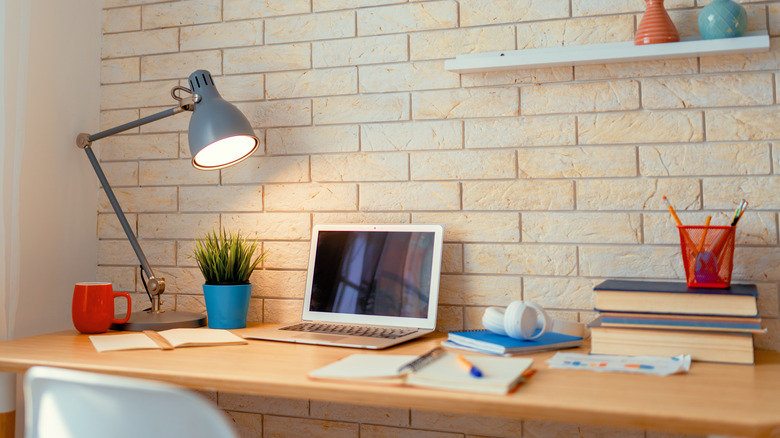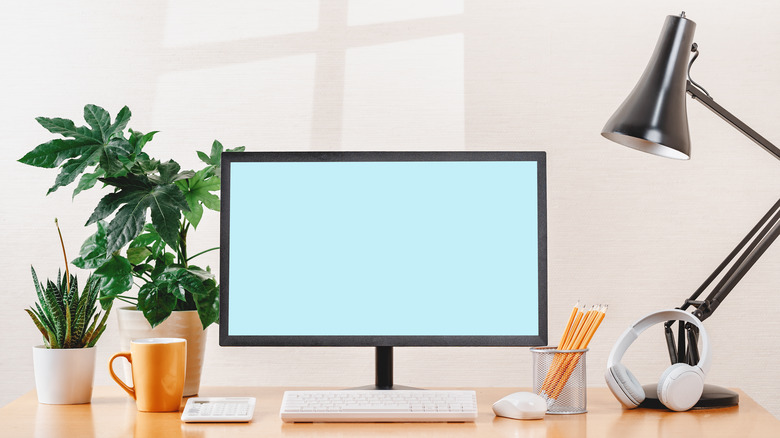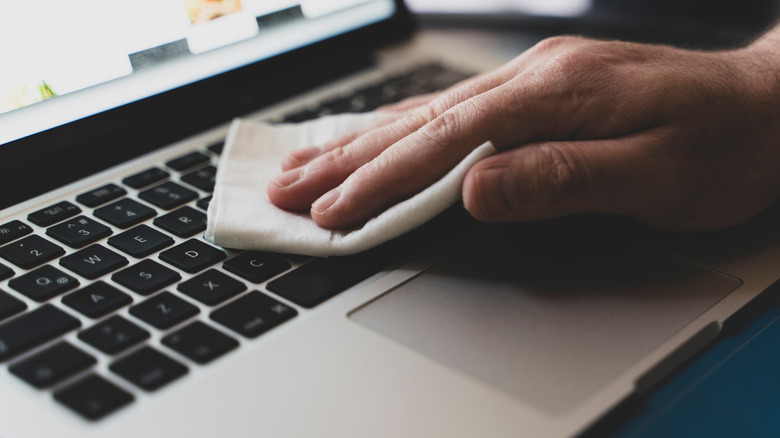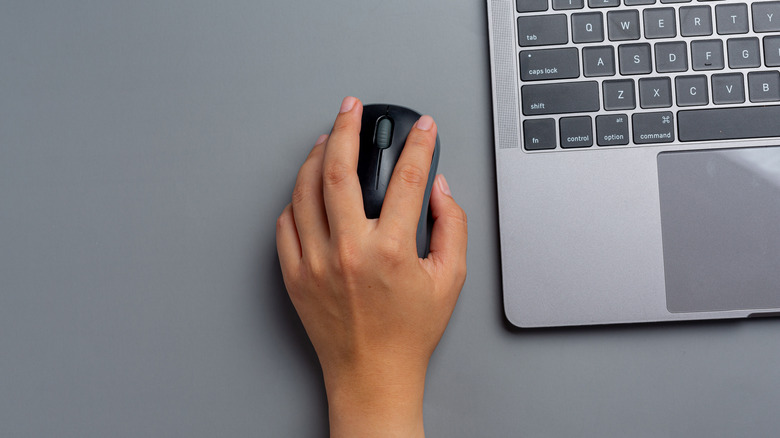How To Safely Clean Your Computer Screen, Keyboard, And Mouse, According To Experts
Have you looked down at your keyboard lately? Notice those crumbs or weird marks in between keys. A quick glance at your computer screen at just the right angle will likely show you a ton of greasy fingerprint smudges. And hey, when was the last time you cleaned your mouse, that thing you touch for multiple hours every single day? Yup, it's time for a cleaning. Flower Maid notes that not only do regular cleanings keep things looking great, but they can extend the lifetime of your electronic equipment. But don't reach out for your multipurpose house cleaner or wet wipes.
Cleaning your computer, keyboard, and mouse setup requires specific steps and should only be treated with very few products. These are electric systems, so flooding them with water and other chemicals can severely damage them. In an exclusive interview with House Digest, we spoke with the experts Justin Carpenter, CEO and Founder of Modern Maids, and Alex Varela, General Manager of Dallas Maids of North Dallas, to get their tips and advice for safely cleaning your desktop or laptop screen, keyboard, and mouse.
Cleaning your computer screen
To begin your cleaning maintenance of your desk setup, the monitor is a great place to start. "Cleaning your computer screen is a necessary step in keeping it looking great and functional," says Carpenter. "To do this, first power off or unplug the device before beginning. Next, use a clean microfiber cloth dampened with water (or an electronics-safe cleaning fluid), gently wiping the screen in circular motions to remove dust and grime," they advise. Note that Carpenter recommends using an electronic-safe cleaner. These are typically quick-drying cleaners, so they won't flood and damage your computer monitor.
Varela is careful to clarify that you shouldn't use just any water. "Only use distilled water as a cleaning agent, as it is more than enough to remove mild dust and grime that usually sits on top of screens," Varela warns. "It needs to be distilled water because, depending on where you live, tap water can contain minerals in a higher concentration. North Dallas, for example, has hard water, and that can cause micro scratches in the long run," they say. Most of America has hard water (via EcoPure), so be sure to pick up a bottle of distilled water for cleaning purposes.
Tending to your keyboard
One of the easiest ways to tell if someone tends to eat lunch in front of their computer is by looking at their keyboard. They are magnets for greasy residue and crumbs. The small gaps around the keys make it easy for debris to sneak in and collect there. These spaces and nooks are also exactly the reason you need to be extremely careful when cleaning the keyboard.
"Cleaning your keyboard is important for preserving its appearance and functionality," says Carpenter. Their recommendation is simple, and they suggest a similar method to their advice for cleaning the monitor, stating, "Start by unplugging the device, then use a slightly dampened microfiber cloth to gently wipe away dust and debris."
On the other hand, Varela thinks it's worth investing in some tools specifically designed for keyboard cleaning. "If possible, get a specialized keyboard cleaning brush set. They are affordable (around $10) and will save you headaches, so it's more than worth it," says Varela. "In the same line of thought, you can get an electric air duster, which will help blow out the dust with ease," they add. Not looking to invest or don't have time to order these supplies? Then Varela says, "If you don't have any of them, use a cotton swab and a tiny drop of rubbing alcohol."
Making sure your mouse is sanitary
Your computer mouse can be especially tricky to clean properly. While a lightly damp cloth may work to remove residue, dust, and fingerprints, there's also a spinner wheel that loves to collect tiny crumbs and debris and narrow gaps between the click-pads and on the sides. Varela says the electronic air duster mentioned earlier will come in handy here. "An air duster will work just as nicely, especially for the mouse sensor, as it should not be cleaned with any liquids at all," they say. For those tiny gaps, Varela advises, "You can use a toothpick (covering it with the cloth) to remove grime along the edges. Make sure the mouse is completely dry before plugging it back."
Carpenter still likes to keep it simple for the mouse as well. They say, "Similar to the other computer components, unplugging the device before beginning is a must for safety. To clean a wired or wireless mouse, use a clean microfiber cloth dampened with water (or an electronics-safe cleaning fluid). Gently wipe away any dirt and debris between the buttons or scroll wheel." But if things are dire and extra icky, Carpenter says, "For tougher grime, use a cotton swab with a small amount of rubbing alcohol or electronics-safe cleaning fluid to remove it."



